Types of Fractures
1/10
There's no tags or description
Looks like no tags are added yet.
Name | Mastery | Learn | Test | Matching | Spaced |
|---|
No study sessions yet.
11 Terms
Open vs. Closed Fracture
open: has been exposed to the air
closed: harshly bruised
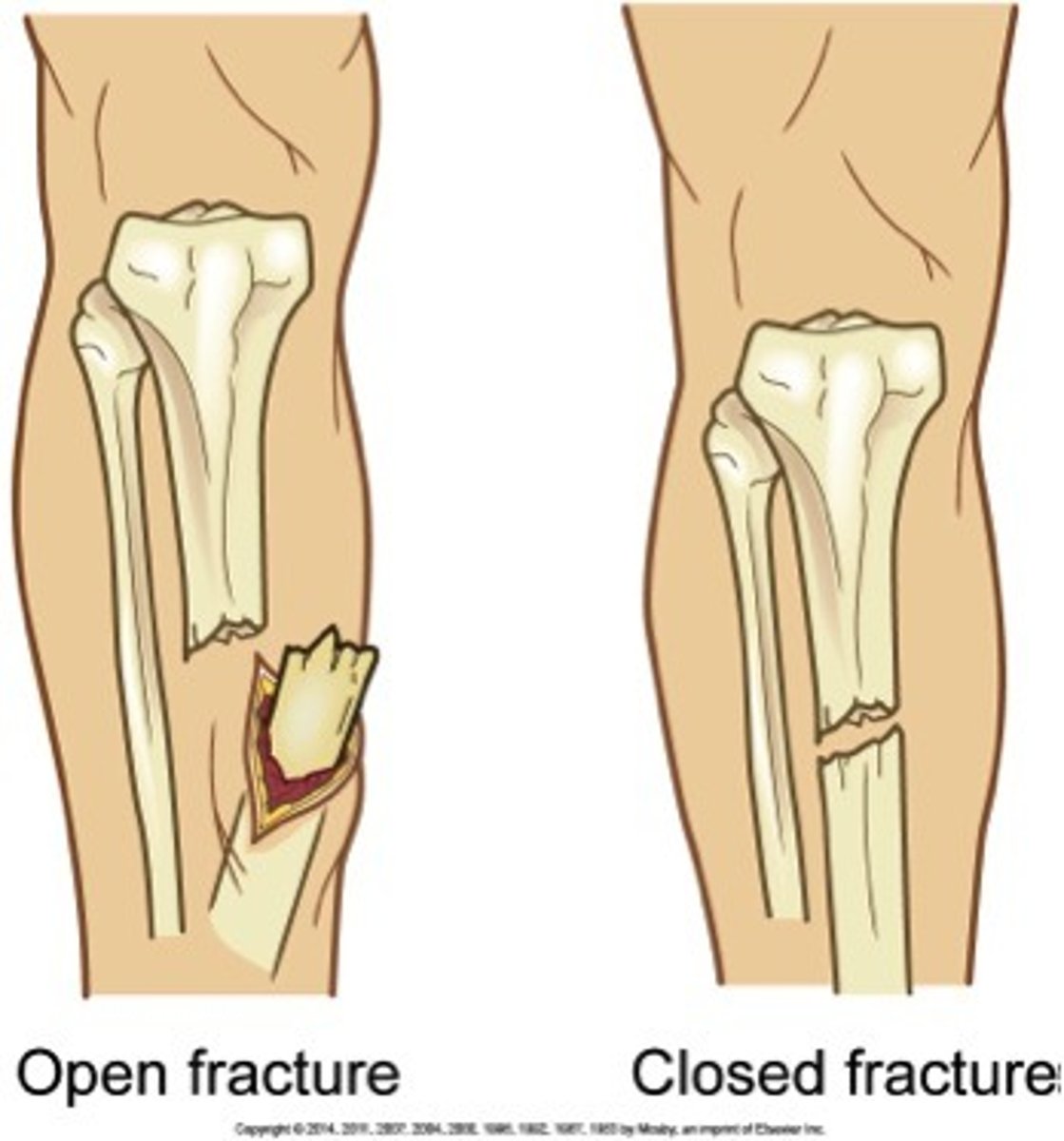
Greenstick Fracture
One side of the
bone has a fracture, but the opposite
side bends, resisting a complete
fracture.
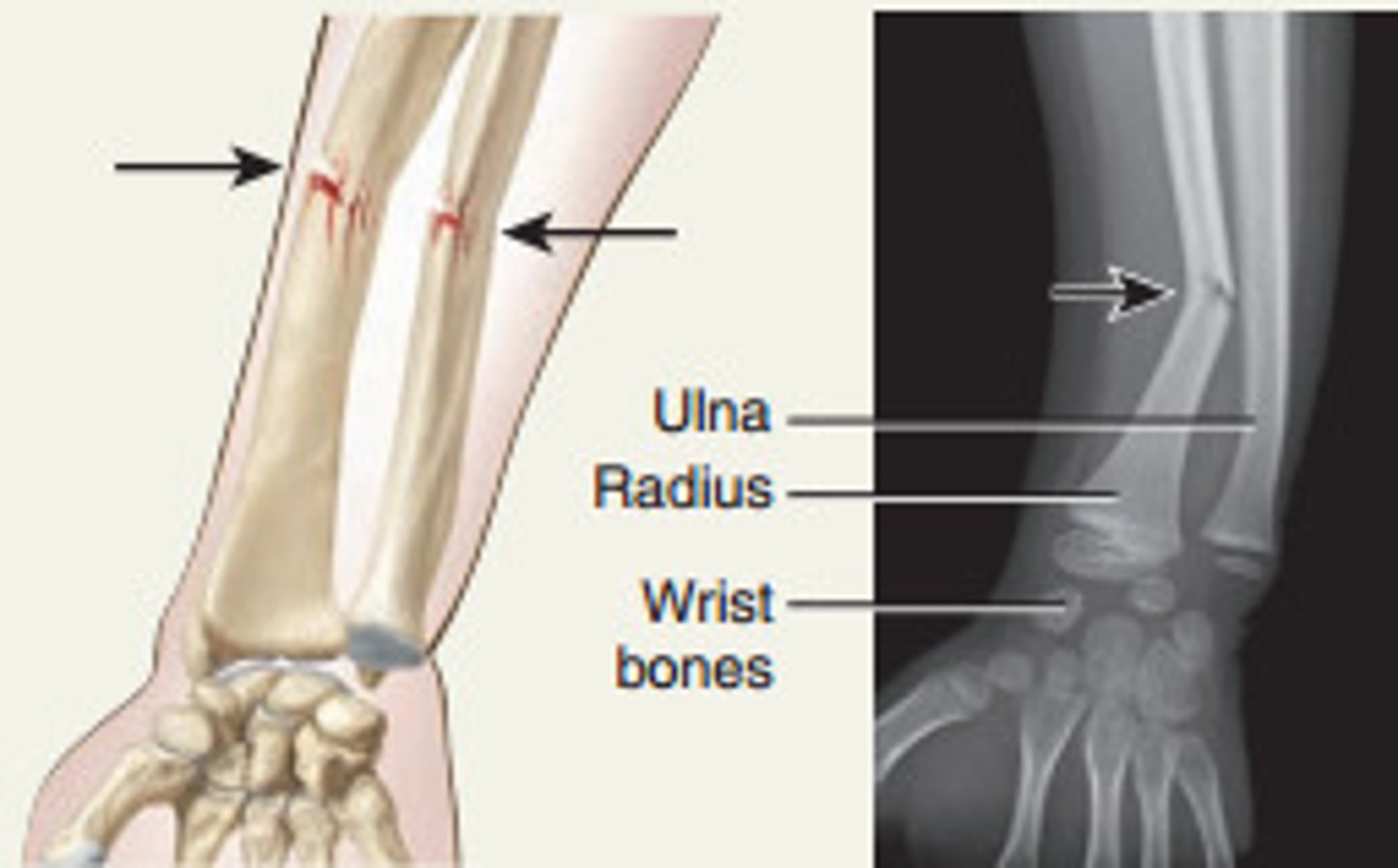
Comminuted Fracture
The bone breaks
several places between two large
segments of intact bone.
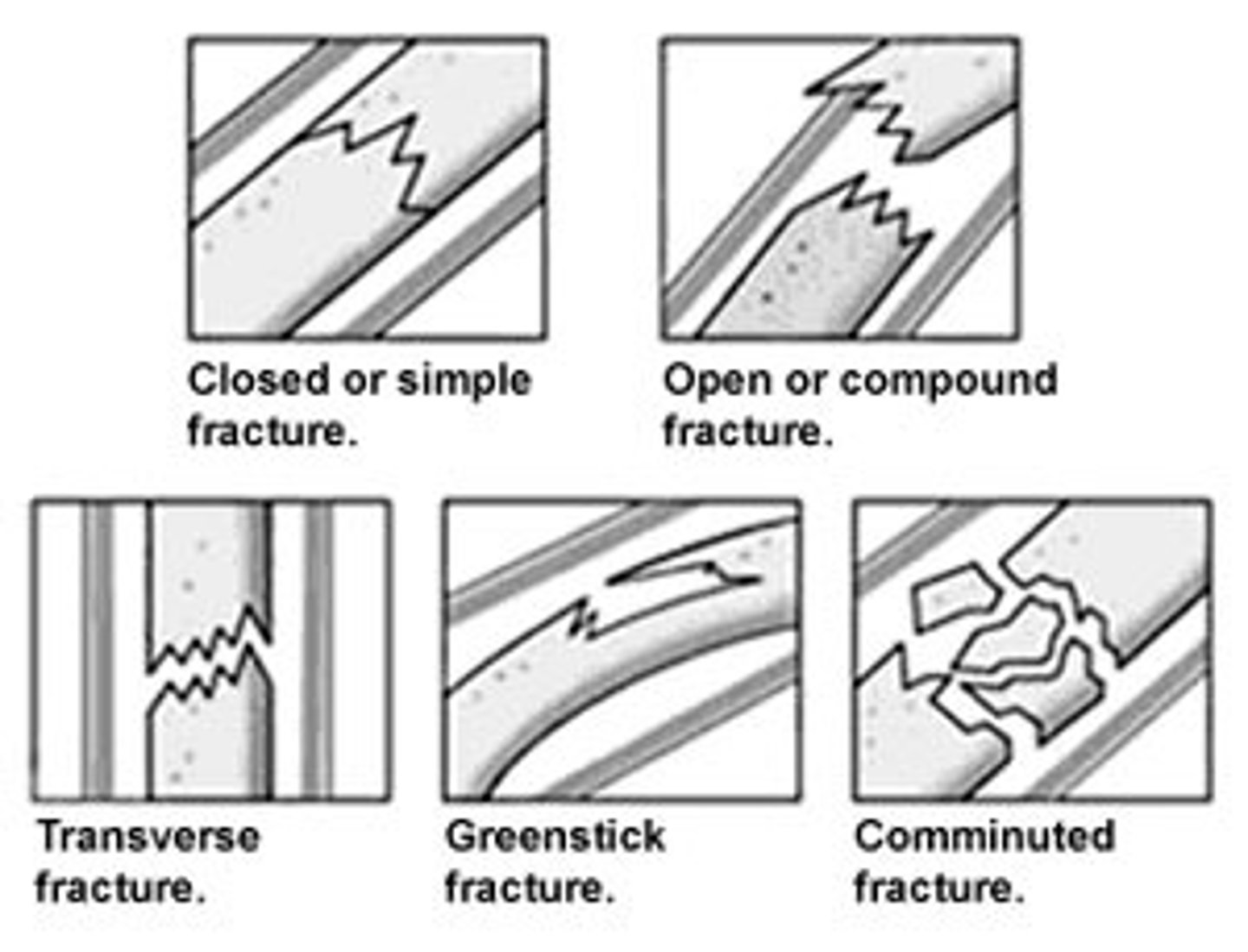
Transverse Fracture
A break that runs directly across the
long axis of the bone
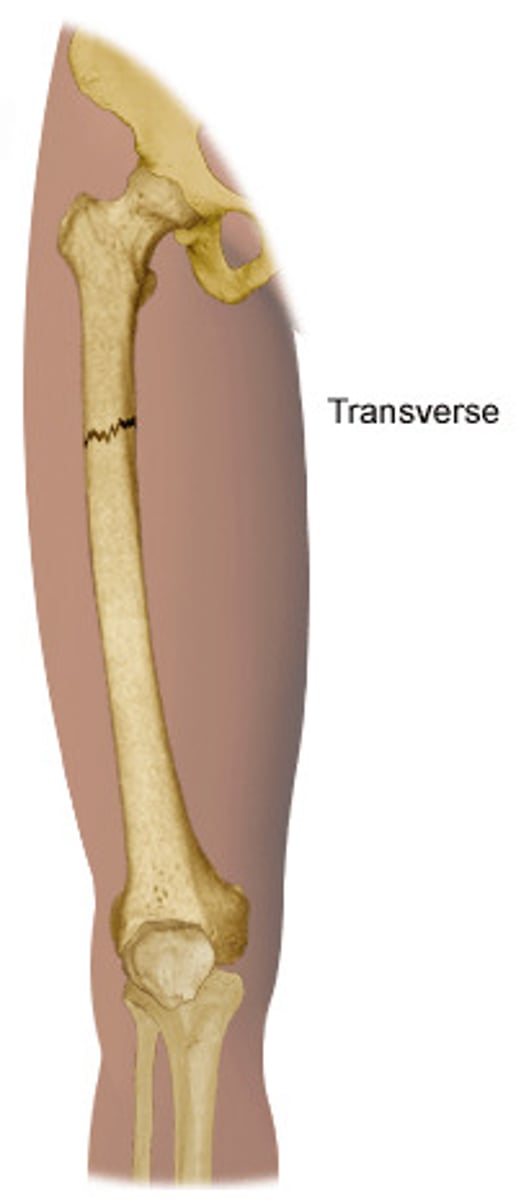
Oblique Fracture
a break with an angle that is not 90 degrees

Spiral Fracture (Similar to oblique)
A ragged break caused by the bone being
pulled in a twisting motion. The break often
spirals across the surface of the bone
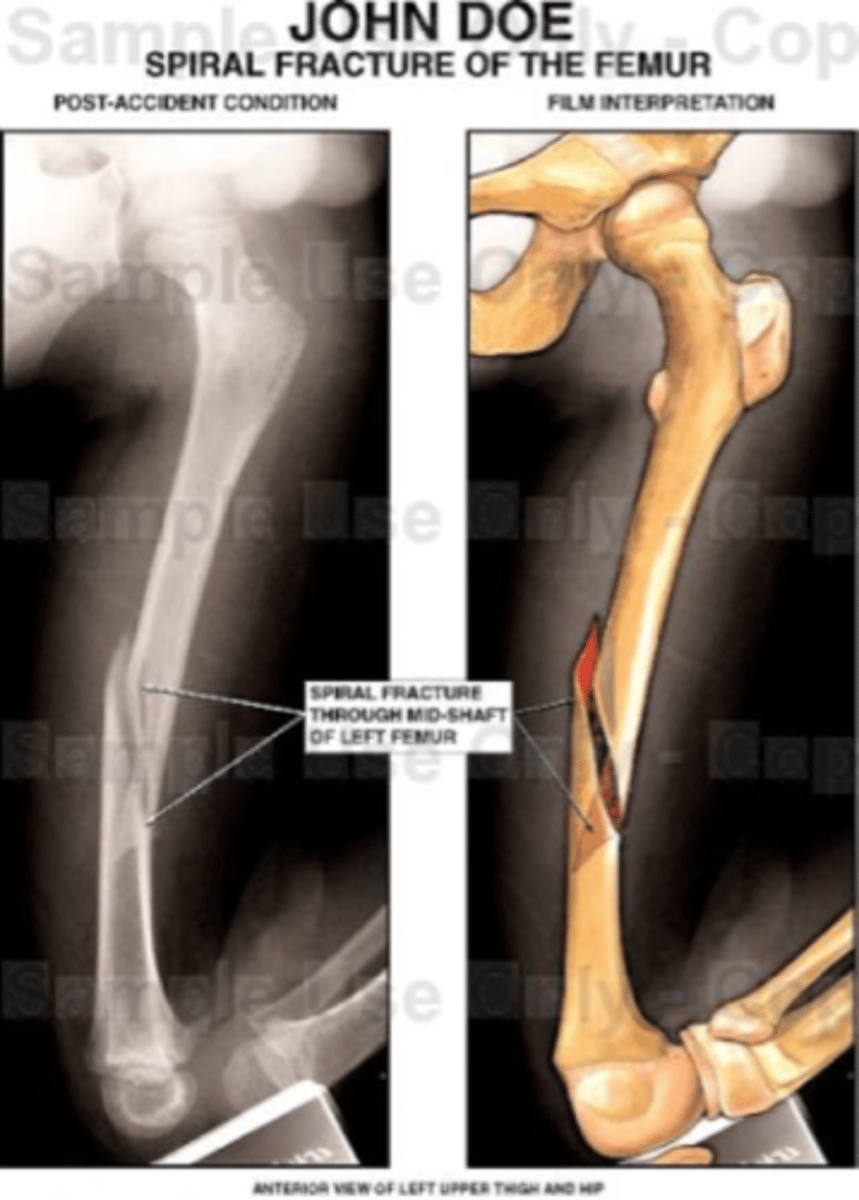
Avulsion Fracture
This is an injury to a bone at a site
where a ligament or tendon attaches, and pulls of
a piece of the bone. These are more common in
some places than others.
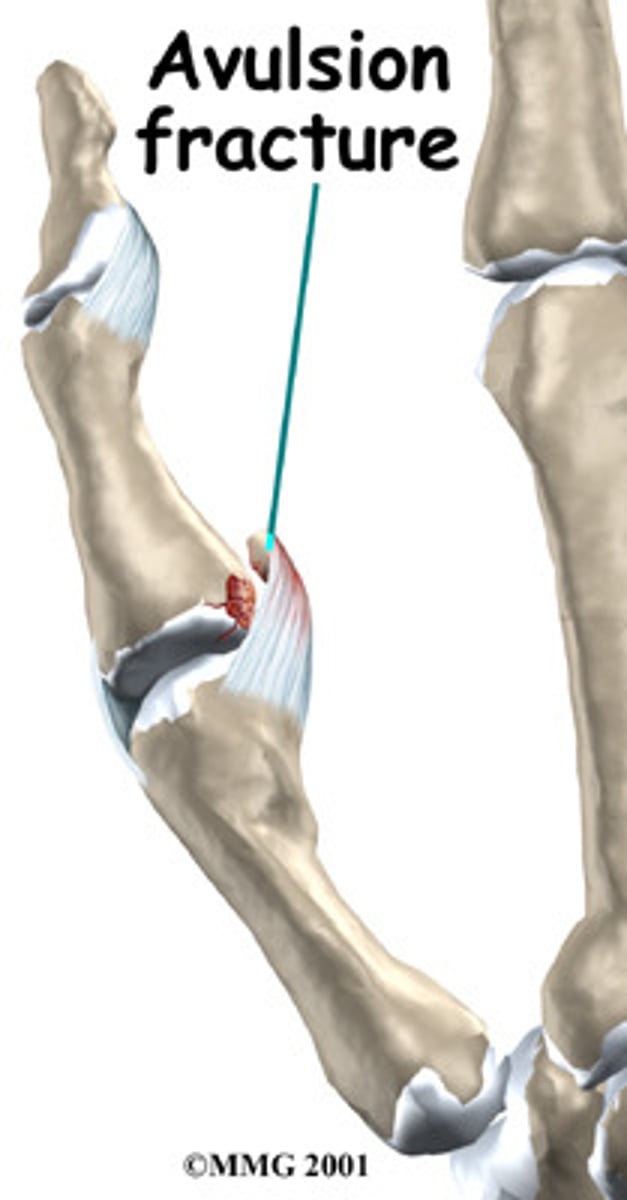
Epiphyseal/physeal
A fracture that runs along or through the epiphyseal
plate. As shown, there are five classifications. You are not required to know all five variations on a physeal fracture on the practical, but you should know that any involvement of the epiphyseal plate means that it would be classified as physeal!
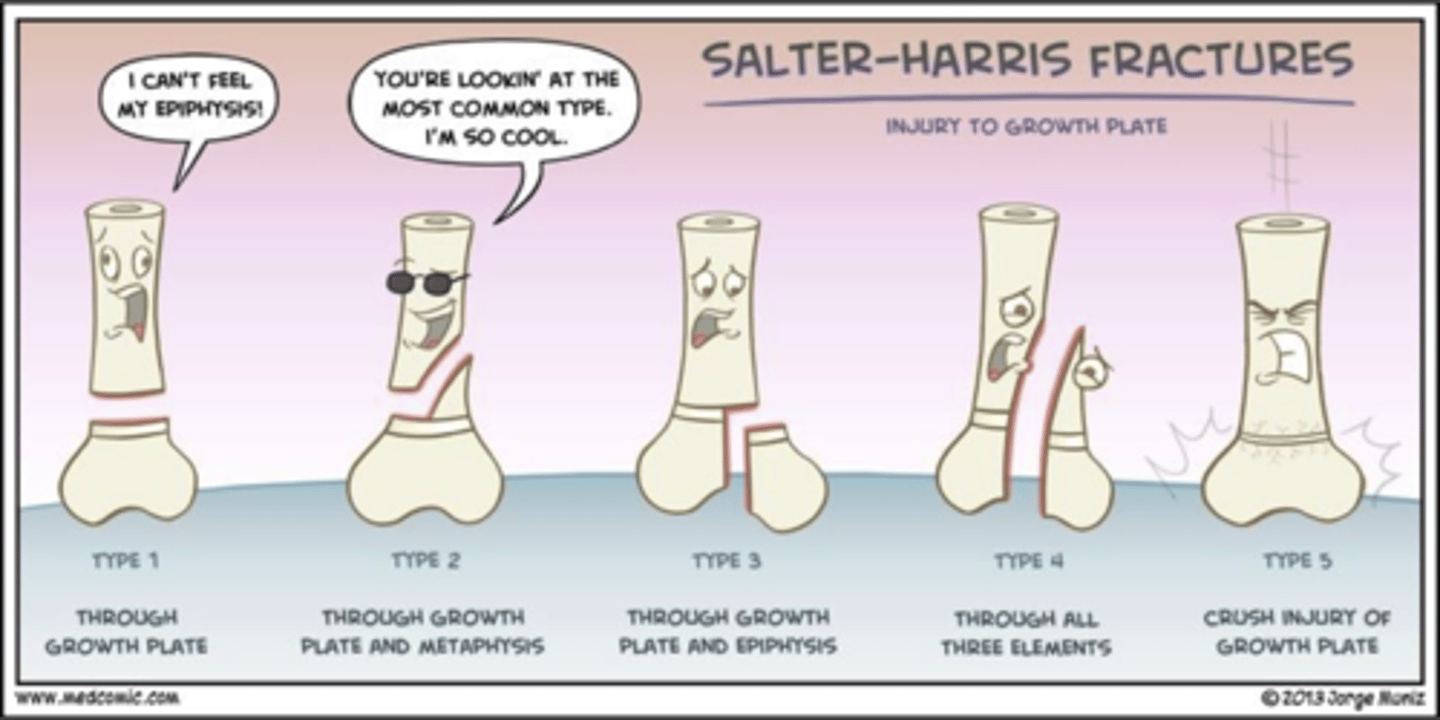
compression/impacted fracture
A
bone is put under pressure or two
bones are driven together, crushing
the bone
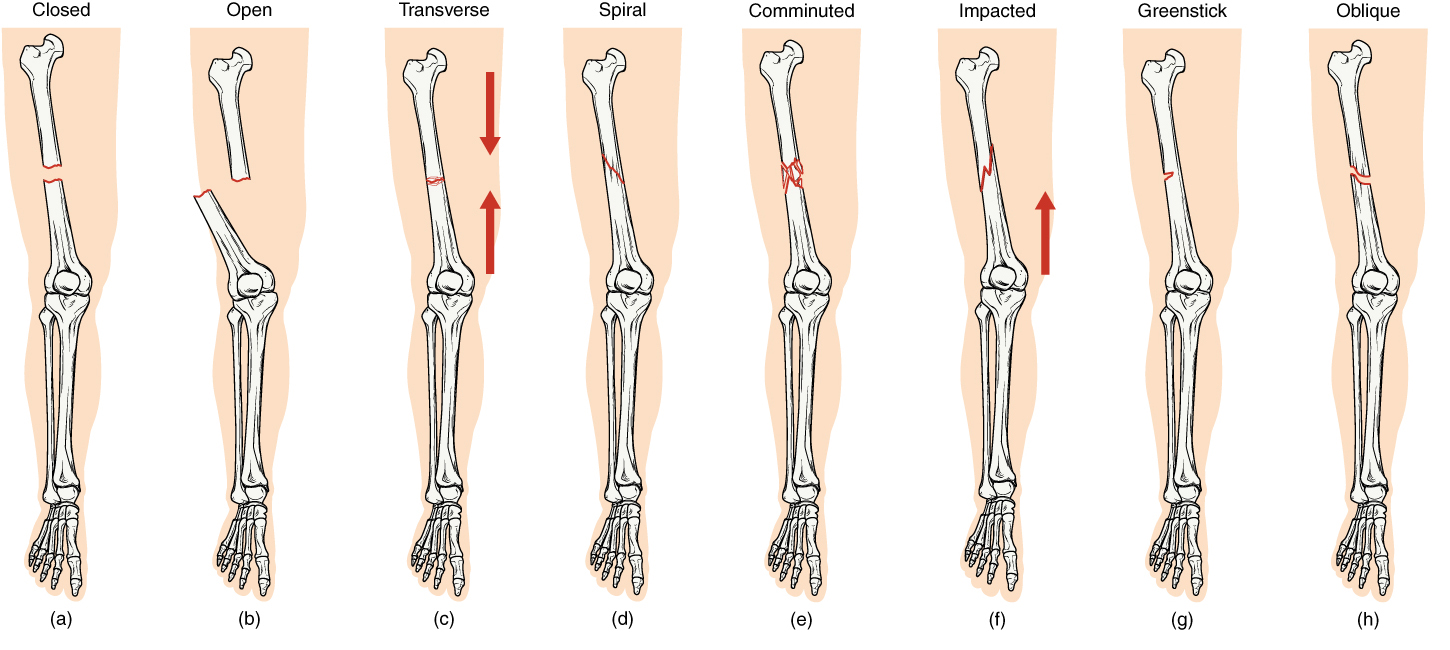
displaced/non-displaced
whether part of the
bone is OR is not moved from its proper position
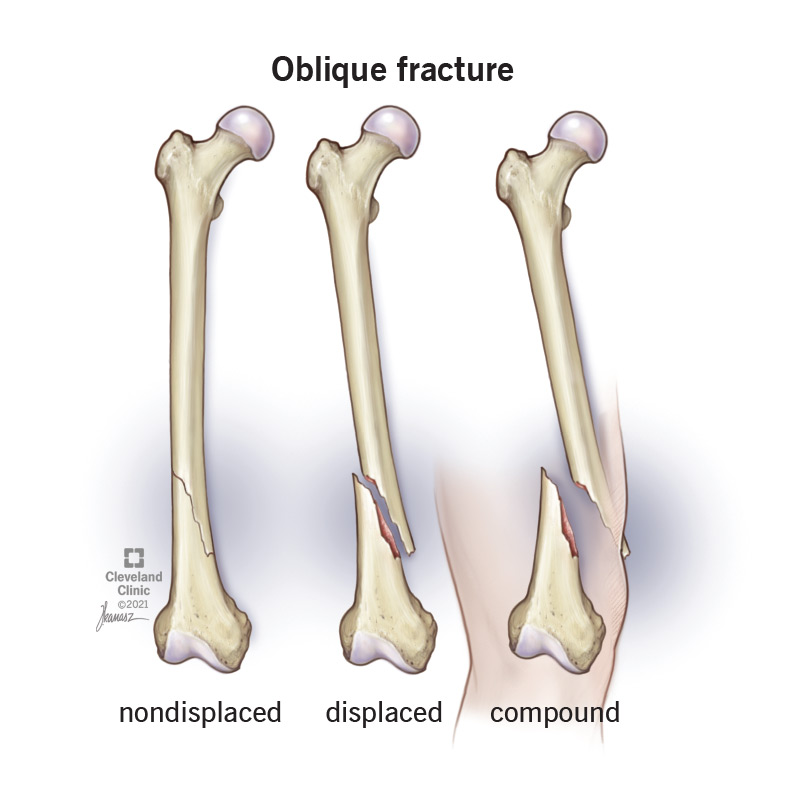
complete/incomplete
whether the bone
is broken all the way OR only part of the way
through